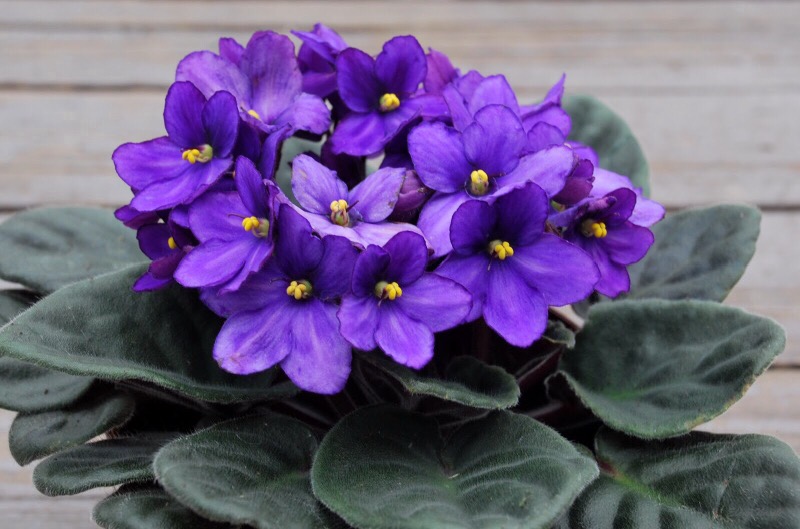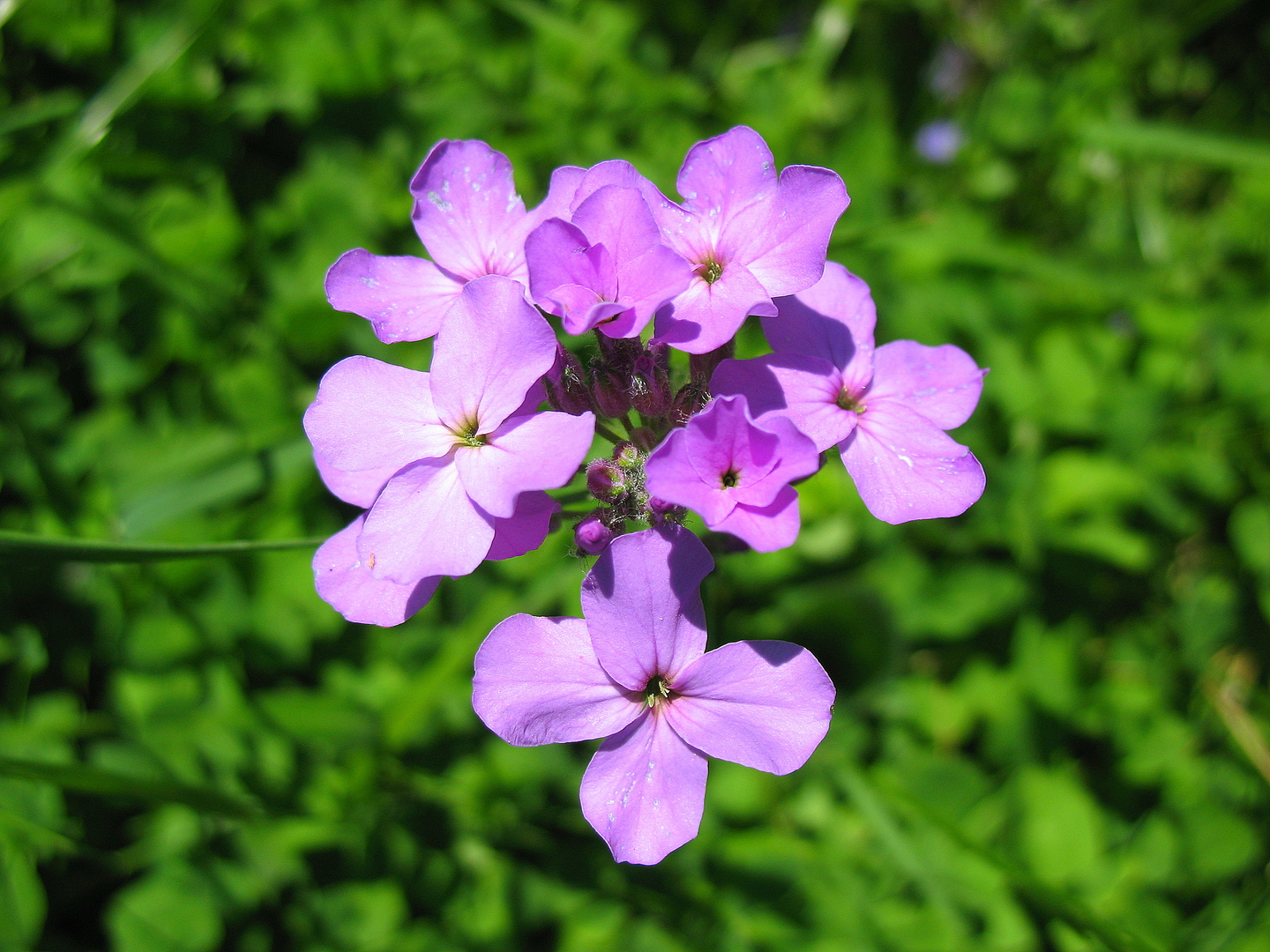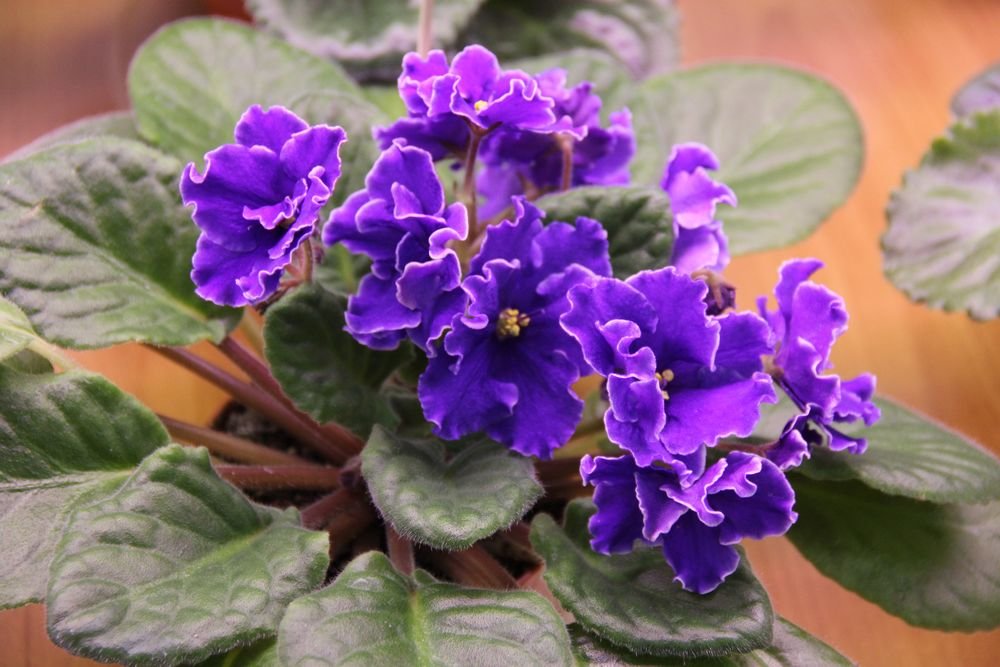Violets are delicate and capricious plants, but their flowering is worth all the worries and hassle. These flowers are planted at once in 5-6 pieces, they collect collections from specimens with different colors of buds - monochromatic, variegated, striped. But there are 6 reasons why you fail to achieve flowering.

Incorrect landing or transplant
In order for the violet to take root in a new environment and begin to give out buds, transplant it in the spring, until it actively grows.
Transplant is needed:
- purchased plant 3 weeks after purchase;
- a withering flower, it already lacks nutrients from the soil and fertilizers.
The soil must be suitable in composition. It is a loose, moisture-retaining substrate that you can harvest yourself using garden soil and sand. Disinfect with hot temperature before use. If this is difficult, then in stores special soil for violets is sold, ready to use. You also need drainage - expanded clay or vermiculite, fill it with at least the lower third of the pot to absorb excess moisture.
Choose the size correctly, not much larger than the previous one. The violet has a poorly developed root system and a large volume of soil is harmful to it for 2 reasons:
- it will be difficult for the roots to drain a lot of moisture and they will rot;
- until the plant takes up the entire volume of roots, there will be no flowering. First it will try to grow, and only then bloom.
Focus on the size of the flower, pick up a pot 3 times smaller than itself.
Lack of lighting
The violet blooms all year round. Good illumination is necessary for the formation of buds and flowers.
From a lack of light, the leaves will become lethargic, dull, stretched upward. In this state of the plant, you should not expect lush flowering from it. If the leaves of the violet are withering, change the place of the flower.
The duration of daylight hours is needed at least 10 hours, and preferably 13-14, for the plant to develop and new buds are laid. Therefore, the windowsill is the right place for these flowers. But avoid direct sunlight as it will burn you. North and West facing windows are great for growing flowering plants, there is no scorching sun and a lot of light.
Rotate the flower periodically so that it forms symmetrical rather than one-sided.
Improper watering
Violets have delicate velvety leaves, while brittle. They can be easily damaged even by watering. When damaged, a fungal infection penetrates, which takes away the strength of the plant and prevents flowering.
Also below are the "growth points" of the flower, if you fill them with water, the plant will die.
Watering is best done in a pan or by a gentle drip method, irrigating the ground around the flower. When watering, do not get on the leaves and flowers, as mold and rot will start in hard-to-reach places.
Use tap water if it has stood for at least 3 days, it will return to room temperature, all impurities will settle and evaporate.
Unsuitable temperature or humidity
Violets need high air humidity, as in natural conditions. But it is not recommended to spray, since water drops remain inside without evaporating, and a fungus appears there.
The problem will be solved by a home air humidifier or by the following techniques:
- do not place the violet near heating sources where the air is dry;
- keep the pot in a pallet with expanded clay, covered with water.
The air temperature needs a constant, 18 - 24 degrees, from a sharp decrease or increase, the violet will drop flowers. And if the temperature drops below 15 degrees, the plant will stop growing and budding.
Place the violet in a location where the conditions are easy to maintain and it will bloom consistently.
The presence of diseases or pests
Poor care leads to diseases of the violet or pest infestation, it withers and flowering stops for a long time.
It is often affected by powdery mildew - when a white bloom appears on the leaves, the plant is treated with Fundazol or Bentlan.
If brown dry spots appear on the leaves, it may be late blight - a fungal infection of the root collar. It will hardly be possible to save the flower. Infection occurs after the violation of the integrity of the stem at the bottom of the roots and moisture ingress there.
Gray rot - a fluffy bloom of mold appears on the leaves. Such a plant is also difficult to save, it is better to dispose of it together with the earth, and disinfect the pot. Stagnation of moisture, a draft or a change in temperature can provoke the disease.
The presence of pests is determined by small specks on the leaves. Insects feed on the sap of the plant, from which it begins to wither. Strong chemicals are used against pests, use them outdoors with protective equipment - gloves and goggles.
After the pests or disease have been removed, provide the plant with rest, appropriate, caring care, then the violet will bloom again.
Lack or excess of feeding
Violet is sensitive to soil composition. From a lack of one element against the background of an overabundance of another, plant diseases arise, and you can forget about flowering.
Top dressing is needed regularly, from the beginning of the growing season - from March. The fertilizer composition should contain nitrogen, phosphorus and potassium. Nitrogen fertilizers are used for the growth and rich color of the leaves; with its lack in the soil, the leaves turn yellow and fall off.
Flowering stops with an excess of nitrogen and a lack of phosphorus, which contributes to the formation of buds. Therefore, with a satisfactory appearance, it is recommended to use a complex mineral fertilizer specifically for violets, in which the composition is balanced for development.
The state of the plant will show what elements it lacks. Use separately to stimulate the growth of green mass and to increase the number of buds.
You can not fertilize violets:
- a month after transplantation and treatment for diseases and pests;
- at the wrong temperature of the content.


